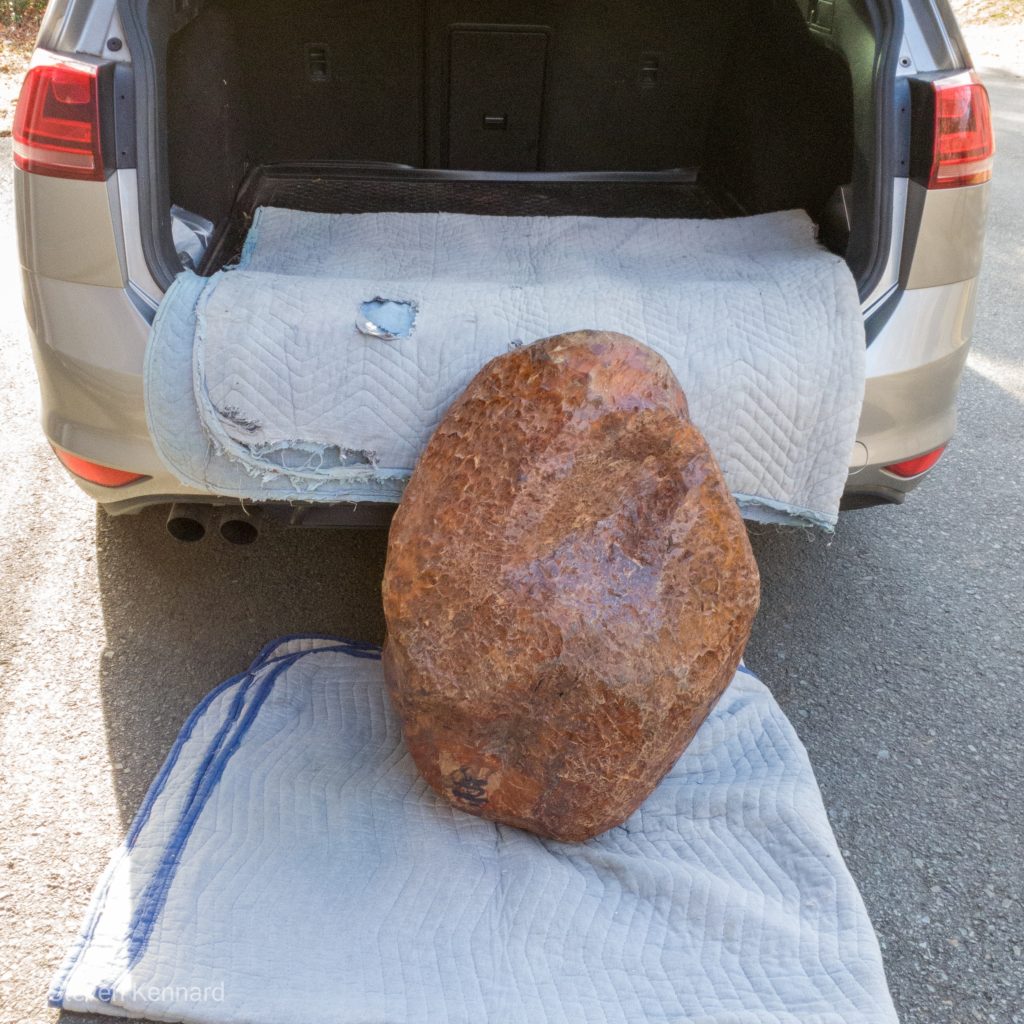
When you see a beautiful box like the one pictured above, have you ever wondered what the piece of raw wood it was made from first looked like when it arrived in my studio?
The trees that produce these burls are quite small and grow exclusively in the Atlas mountains of Morrocco in almost inaccessible regions. The wood has also been called Thyine (and is mentioned as such in the Bible in Revelation 18:12). It is also known as Citron burl. These burls have to be transported down the mountainsides to the lowlands by donkeys or mules as there are no access roads. They grow, not on the trunk of the tree as we often see in the woods around us, but on the root systems, very much like a potato, underground. Many of the root burls have been hidden there for very long periods of time as the trees disappeared up to 100 years ago and the roots remained buried. As a result of the dry climate and the resinous qualities of the burl, they remain perfectly preserved, to be discovered and excavated many years later. Because the tree has been gone for so long, it can be challenging to know where the roots and the burls might be.

Where to make that first cut?
I’ve been eyeing this burl up for a long time, hoping it wouldn’t sell, so finally I took courage and brought it home! Next comes the scary bit – where do I make that first cut? It’s important to maximise the wood that will be available to work with and it’s not possible to see the intensity of the figuring until the first cut has been made. There also was a hole on the side that penetrated the burl quite deeply and it was impossible to predict the direction and depth of this flaw.
After seeing my original post on social media about this purchase my neighbour, film-maker Kimberly Smith, was extremely curious and offered to record the moment of the first cut to reveal the beauty in the video you see below. Many thanks to Kim!
And here is the burl open for us to see the beauty inside!

And a closeup of the cut surface of this burl.

From here the hard work begins, to fashion the box you see above from smaller pieces cut out of this block. I also use this wood as accents, inlay and to line the interior of some of my boxes. Because this wood is so rare and precious, I prefer to use it for these, as it pains me to lose so much in the shavings and sawdust that result from a finished box.

That was a fun video. I have a slab of thuya given me by Bob M. at East Coast, assuming that’s where your burl came from. I have to settle on what to do with it. A whole burl: lots of decisions.
You do very beautiful work. Enjoying your website.
Thanks Adrian, I know, it’s always hard to make decisions on what to do with such beautiful wood. I bought the very last burl they had in the place. Have fun turning.
Cheers
Steven